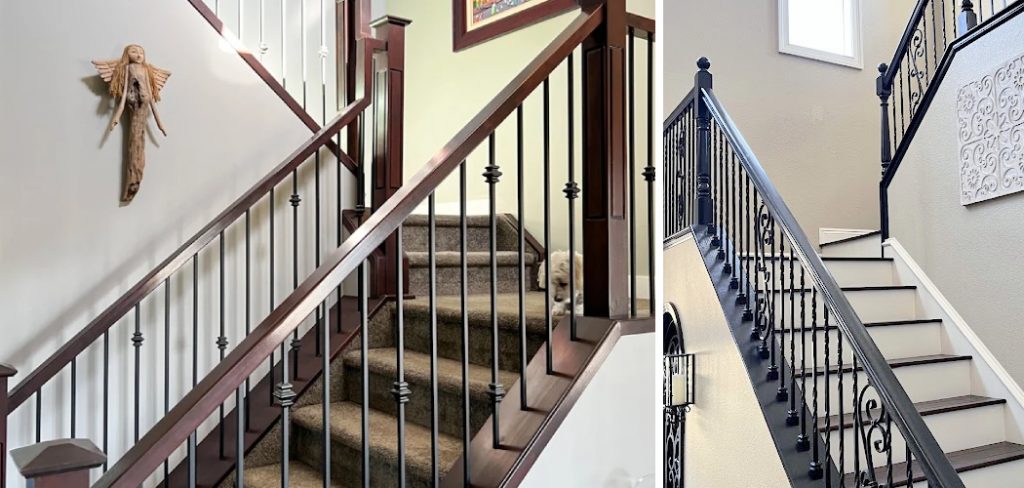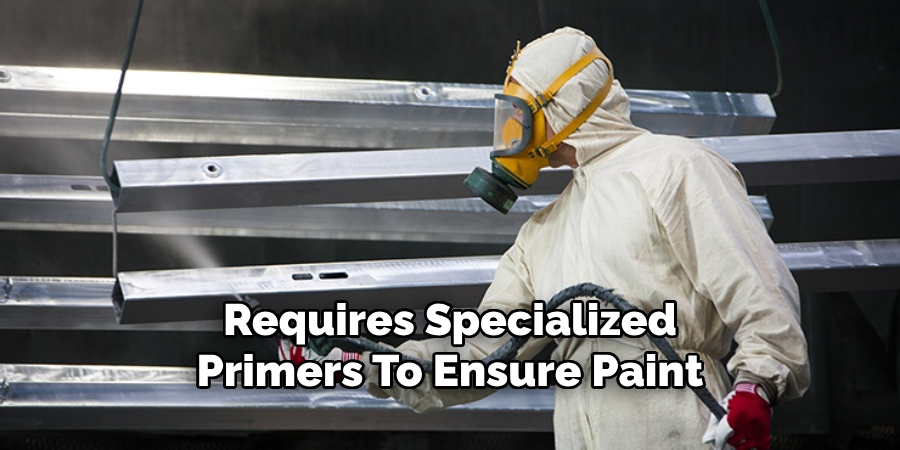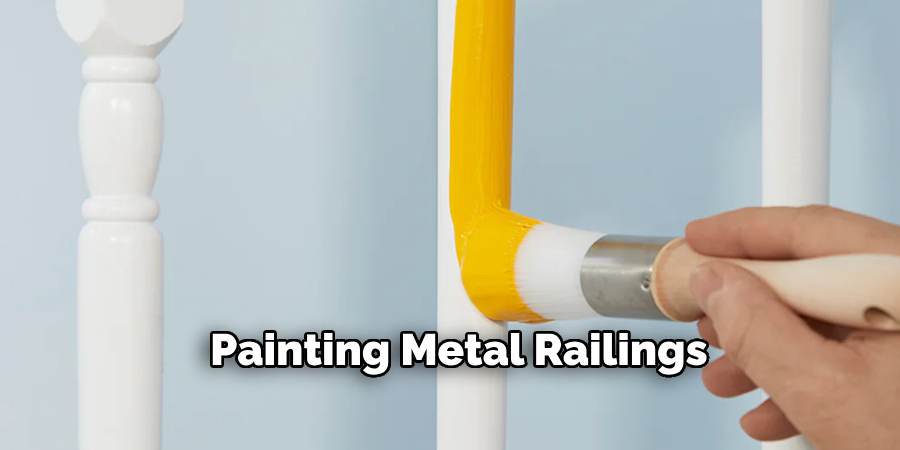Painting metal railings indoors can be an effective way to refresh and revitalize your space, adding a touch of elegance and style. However, it requires careful preparation and the right techniques to ensure a smooth, lasting finish. This guide will walk you through how to paint metal railings indoor, even if you’re a DIY enthusiast with limited experience. From selecting the appropriate paint type to properly preparing the surface, you’ll gain the knowledge and confidence needed to transform your indoor metal railings into standout features of your home.

Importance of Painting Indoor Metal Railings
Painting indoor metal railings is essential for several reasons beyond merely enhancing aesthetic appeal. First and foremost, it helps to protect the metal from corrosion and wear, thereby prolonging the lifespan of your railings. Unpainted or poorly maintained metal railings can rust over time, which not only affects their appearance but can also compromise their structural integrity. Additionally, a fresh coat of paint can improve the visual harmony of your interior space, allowing the railings to match or complement other elements within the room.
Tools and Materials Needed
Before you begin painting your metal railings, it’s important to gather all the necessary tools and materials to ensure a seamless process. Here’s a list of what you’ll need:
- Paint: Choose a high-quality metal paint that suits your interior color scheme and offers rust protection. Consider using a primer if the metal surface is not already primed.
- Brushes and Rollers: Select brushes and rollers that are appropriate for metal surfaces. Brushes with synthetic bristles work well, and foam rollers can provide a smooth finish.
- Sandpaper or Wire Brush: Use sandpaper or a wire brush to scuff up the surface, which helps the paint adhere better. A medium-grit sandpaper is generally effective for this task.
- Drop Cloths: Lay down drop cloths to protect floors and surrounding areas from paint splatters.
- Painter’s Tape: Utilize painter’s tape to mask off areas that you don’t want to be painted, ensuring clean edges.
- Cleaning Supplies: A degreaser or mild soap and water along with clean rags or sponges are necessary to clean the railings before painting.
- Protective Gear: Wear gloves, safety goggles, and a mask to protect yourself from any fumes or debris during the preparation and painting process.
Gathering these tools and materials beforehand will help streamline your painting project, making it easier to achieve professional-looking results.
10 Methods for Painting Indoor Metal Railings Like a Pro
1. Clean the Surface Thoroughly
Before you begin, make sure the surface is completely clean. Metal railings tend to accumulate dust, grime, and oils, which can prevent paint from adhering properly.

- Use a degreaser or mild soap and water to remove dirt.
- Rinse the surface and dry it completely to avoid trapping moisture under the paint.
A clean surface ensures a smoother finish and prevents peeling down the road.
2. Remove Loose Paint
If the railings have been painted before, check for loose or peeling paint. Removing it is crucial for a professional look.
- Use a paint scraper, wire brush, or sandpaper to scrape away the old paint.
- For extensive peeling, consider using a chemical paint stripper.
This step ensures new paint adheres firmly to the metal, extending the railing’s durability.
3. Sand the Metal Surface
Sanding metal creates a texture for the primer and paint to grip onto, ensuring long-lasting results.
- Use 120-grit sandpaper or an orbital sander for flat surfaces.
- Focus on smoothing rough edges or imperfections, especially where old paint was removed.
Once done, wipe away any sanding dust with a damp cloth.
4. Apply a Rust Remover or Converter
If you notice any rust on the railings, address it before painting. Rust can spread under the paint if untreated.
- Use a rust remover to dissolve existing rust.
- Alternatively, apply a rust converter, which neutralizes rust and creates a primable surface.
This step is especially important for older railings or those in humid environments.
5. Use a Metal-Specific Primer
Metal requires specialized primers to ensure paint bonds well and to prevent future rusting.

- Choose an oil-based or rust-inhibiting primer specifically designed for metal surfaces.
- Apply a thin, even coat using a brush, roller, or spray can, depending on the complexity of the railing design.
Wait for the primer to dry completely (as indicated on the product label) before proceeding to paint.
6. Choose the Right Paint for Metal
Not all paints are suitable for metal surfaces. To achieve a durable finish, opt for paints specifically formulated for metal.
- Look for oil-based enamel or acrylic paint, as they are more resistant to chipping and wear.
- Consider using high-gloss or semi-gloss finishes for easy cleaning and maintenance.
Investing in the right paint ensures longevity and enhances your railing’s appearance.
7. Use Proper Painting Tools
The tools you choose will depend on the railing’s design and your desired finish.
- For simple railings, use a small foam roller for smooth, even coverage.
- A high-quality brush works best for detailed or ornate railings.
- Spray paint can be a quicker option for intricate designs, but ensure proper ventilation.
Using the right tools minimizes streaks and helps you achieve a polished result.
8. Apply Thin, Even Coats
When painting, patience is key. Applying paint in thin layers prevents drips and creates an even finish.
- Start with a light first coat and allow it to dry fully.
- Apply 1-2 additional coats, waiting for each coat to dry before applying the next.
This method ensures a flawless, streak-free surface that looks professional.
9. Seal for Extra Protection
To enhance durability, finish with a clear sealant designed for metal. This extra layer protects the paint from scratches, scuffs, and wear.
- Use a clear enamel spray or brush-on polyurethane topcoat for the best results.
- Ensure the paint is fully cured before applying the sealant.
Sealing is particularly useful in high-traffic areas or homes with children and pets.
10. Maintain Your Painted Railings
Once painted, maintaining your railings ensures they remain in top condition for years to come.
- Clean them regularly with a damp cloth to remove dust and debris.
- Touch up any chips or scratches as they occur to prevent further damage.

Routine care prolongs the life of your effort and keeps your railings looking fresh.
Troubleshooting Common Issues
Even with meticulous preparation and attention to detail, sometimes issues can arise during or after the painting process. Here are a few common problems you might encounter and how to solve them:
- Paint Drips or Runs: This often occurs if paint is applied too thickly. To fix, allow the paint to dry, then sand down the drips with fine-grit sandpaper and repaint the area with a thin coat.
- Uneven Finish: If the paint appears patchy or uneven, it may be due to inadequate stirring or not enough coats. Stir the paint thoroughly and apply another coat, ensuring even application.
- Peeling Paint: This can happen if the surface wasn’t properly prepared, often due to residual dust or moisture. Remove the peeling paint, clean the area, and adequately prime before repainting.
- Rust Formation: If rust develops under the paint, it usually means that the rust wasn’t fully treated before painting. Use a rust remover or converter, then touch up the paint as needed.
- Bubbles or Blisters: These can result from painting in high humidity or over a dirty surface. To correct, scrape off the bubbles, sand the surface, and repaint under better conditions.
By addressing these issues promptly, you can restore the flawless finish and maintain the quality of your painted railings.
Common Mistakes to Avoid
When painting metal railings, certain missteps can compromise the quality and durability of your work. Here are some common mistakes to avoid:
- Skipping Surface Preparation: Neglecting to remove rust, old paint, or not sanding the surface can lead to poor adhesion and peeling paint. Always thoroughly clean and prepare the surface before applying primer or paint.
- Using the Wrong Type of Paint or Primer: Not all paints and primers are suitable for metal. Choosing products not designed for metal surfaces can result in flaking, chipping, or inadequate rust protection. Ensure you’re using metal-specific products.
- Applying Thick Coats: Thick layers of paint can lead to drips and uneven finishes. It’s crucial to apply multiple thin coats, allowing each to dry properly before continuing.
- Painting in Poor Conditions: Weather conditions matter. Painting in high humidity or extreme temperatures can affect the paint’s ability to adhere and cure properly. Aim for dry, mild weather and avoid windy or dusty conditions.
- Ignoring Curing Times: Failing to wait for paint and sealants to cure fully before using the railings can result in a compromised finish. Follow the manufacturer’s recommendations for drying and curing times.

By steering clear of these mistakes, you can achieve a beautifully painted railing that stands the test of time.
Conclusion
Painting metal railings can significantly enhance both their appearance and longevity. By following a systematic approach that includes proper preparation, selecting the right materials, and applying thin, even coats, you can achieve a professional-quality finish. It’s also crucial to address any issues promptly and maintain the railings to prevent damage over time. Thanks for reading, and we hope this has given you some inspiration on how to paint metal railings indoor!
you can also check it out Repaint a Metal Railing
Edmund Sumlin is a skilled author for Metal Fixes, bringing 6 years of expertise in crafting a wide range of metal fixtures. With a strong background in metalwork, Edmund’s knowledge spans various types of fixtures, from decorative pieces to functional hardware, blending precision with creativity. His passion for metalworking and design has made him a trusted resource in the industry.
Professional Focus:
- Expert in Metal Fixtures : Edmund aesthetic specializes in creating durable and innovative metal fixtures, offering both appeal and functionality. His work reflects a deep understanding of metalworking techniques and materials.
- Sustainability Advocate : He is dedicated to using sustainable practices, ensuring that every fixture is crafted with eco-friendly methods while maintaining high-quality standards.
In his writing for Metal Fixes, Edmund provides valuable insights into the latest trends, techniques, and practical advice for those passionate about metal fixtures, whether they are professionals or DIY enthusiasts. His focus on combining artistry with engineering helps others discover the true potential of metal in design.


